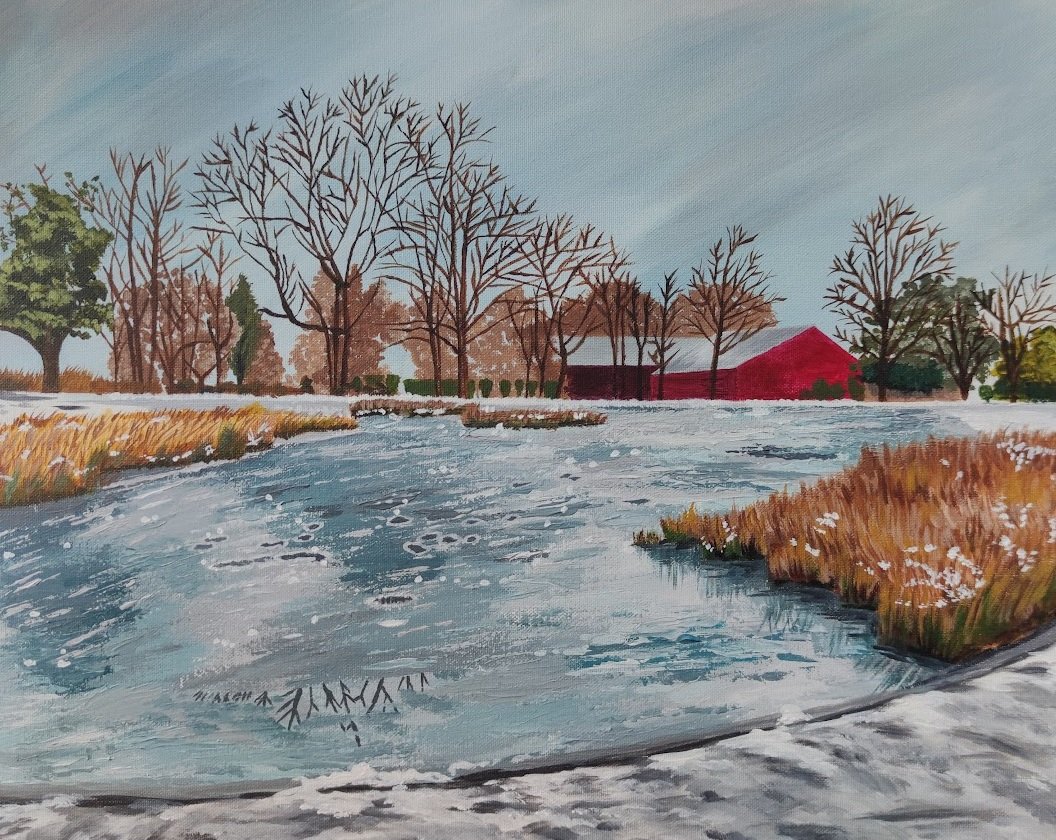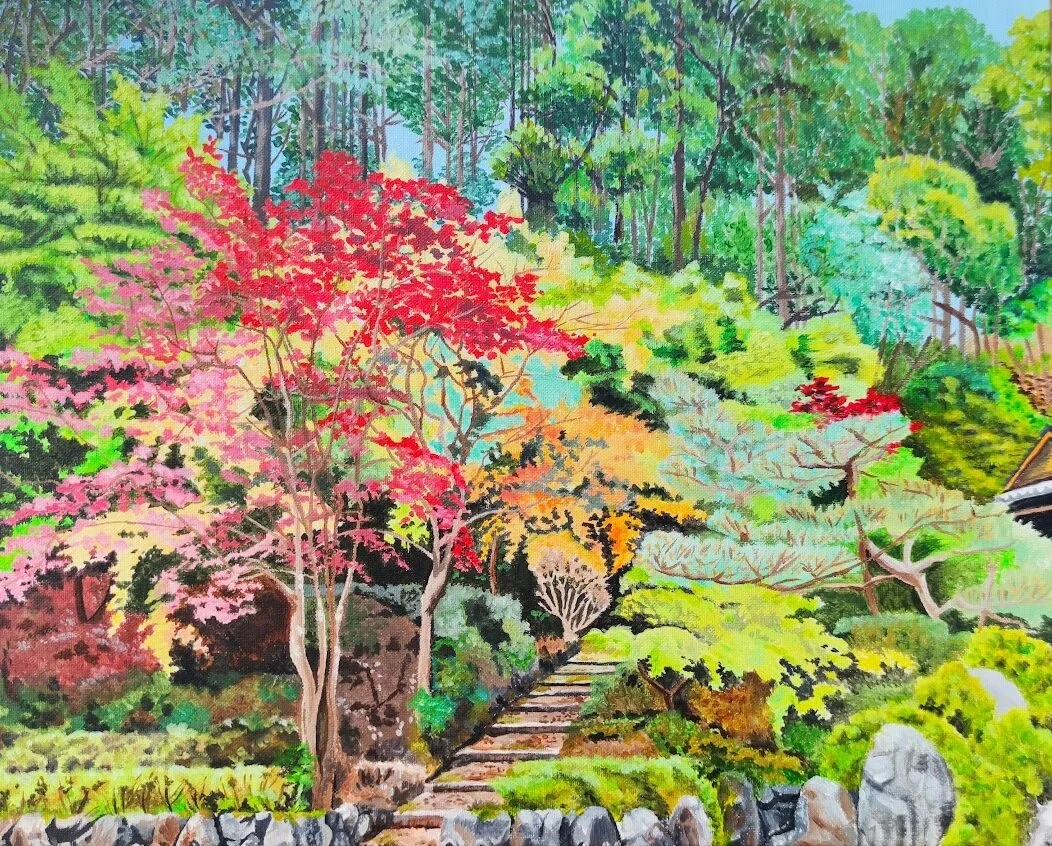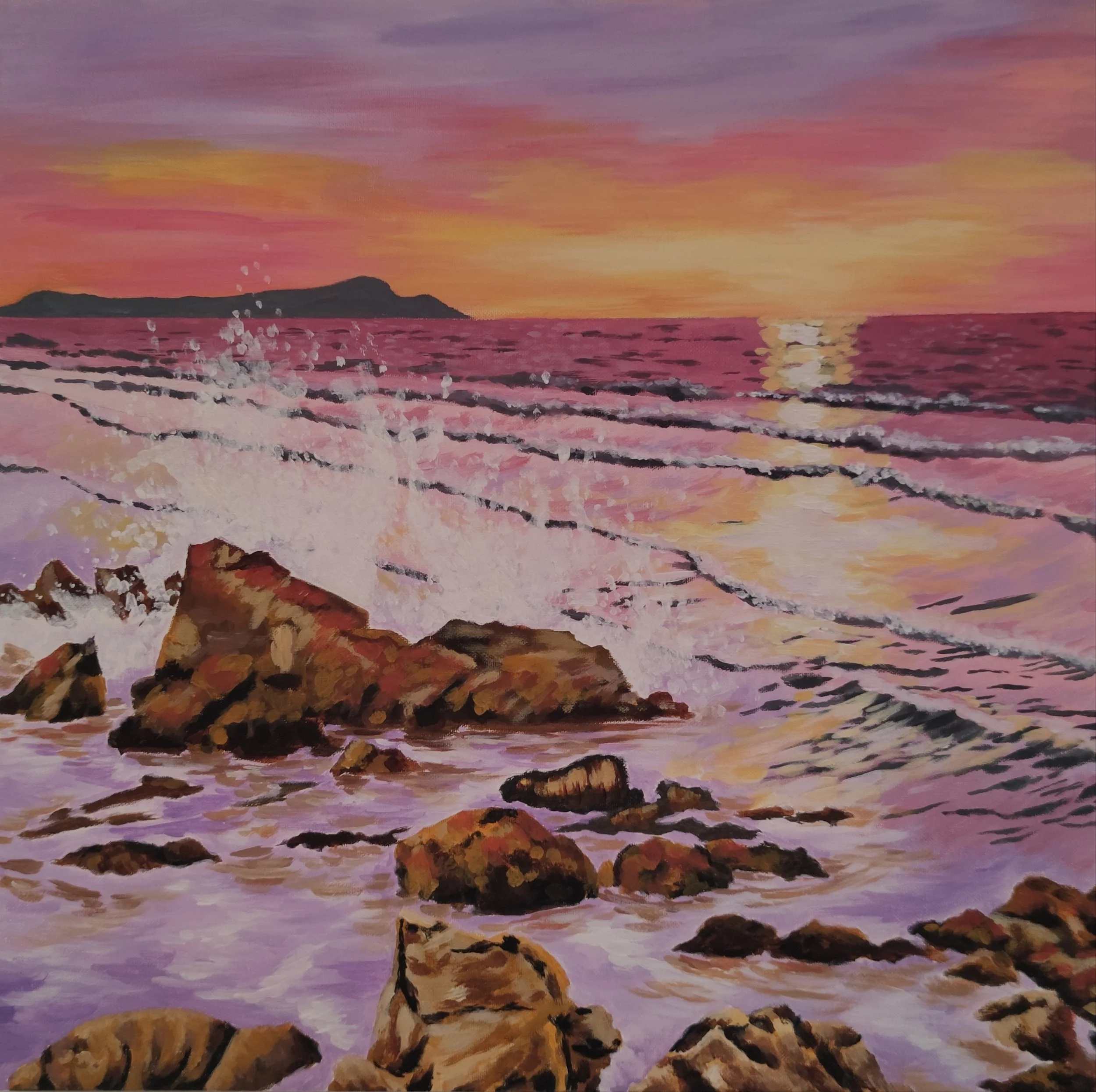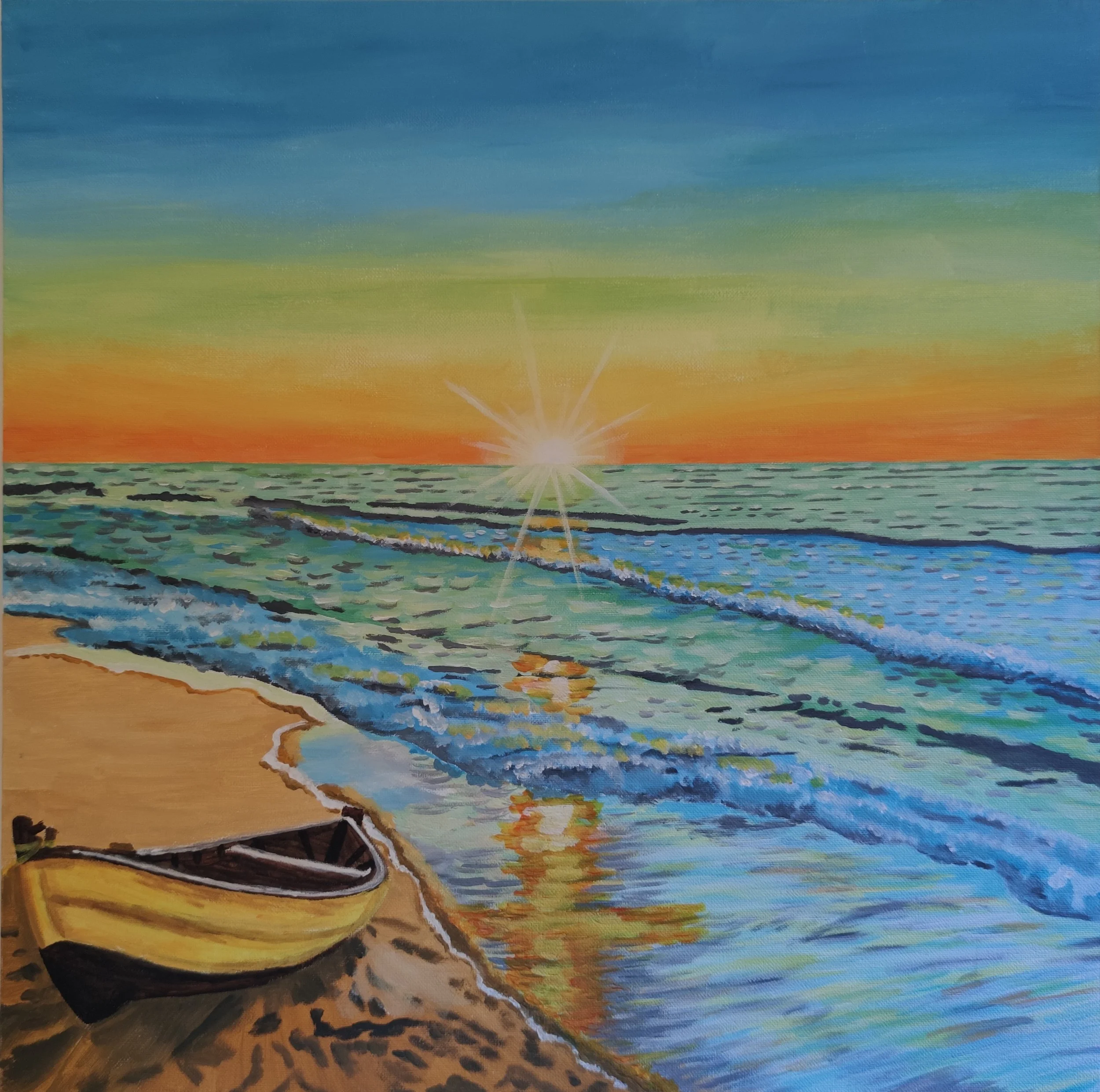
Art Exhibition: Hope, Fear and Dreams (7 - 13 October 2021)
We often associate fear with anxiety or a lack of courage. From a young age, we are told by others to try and not show signs of fear in our expression. It is in our natural instinct to attempt to hide our fears. This is because fears often lead to shame, embarrassment, control, guilt, frustration, sorrow or pain. We tend to internalise our deepest fears, put them into a “box”, set it aside and disguise our true feelings.
However, fear is a natural, powerful and primitive human emotion.
Fear alerts us to the presence of danger or the threat of harm, whether that danger is physical or psychological. Whilst fear is a survival mechanism, an excess of fear can lead to mental health conditions such as panic disorder, social anxiety disorder, phobias, and post-traumatic stress disorder (PTSD). Indeed, it is usually when our health “balance” is tipped over to one side by external stresses, that our fears “re-emerge” and come to the surface.
By being open to vulnerability, we can address each of our internal fears, lovingly accept and embrace our imperfections, then experience healing of our brokenness.
The COVID-19 pandemic around the world over the past year has most certainly created great fears in people’s hearts and minds.
The arts can help promote mental health. While practising the arts is not the panacea for all mental health challenges, there is sufficient evidence to support prioritising arts in our own lives at home as well as in our education systems.
Our hopes, dreams and aspirations may have all been put on hold as a result of the global pandemic. Having said that, when all has been stripped away, we have more time to re-evaluate our needs, and to do some soul-searching. The project which you have always put on the back burner because of other priorities now finds its way to be completed. When time is a new commodity, we no longer have the excuse to sit and wait. In fact, the lockdown has opened up unseen opportunities for each one of us to remove our inhibition, put our mind to focus, and make reality of our hopes and dreams.












Paintings:
Winnie Chan
Ocean Wave (Commissioned Work)
Acrylic on canvas
When kind of emotions does the ocean make you feel?
There are so many different kinds of water and feelings they can evoke. Usually when Winnie sees waves in an ocean, she finds solace and peace when they are calm and serene; yet the ever-changing physical nature of waves also symbolise change and flow in life when they become turbulent and out of control. We all face challenges in our own journey through life; the ways we handle difficult situations and seek help and support from our friends and family demonstrate how well we “weather the storm”.
The current COVID-19 pandemic has swept across the world like a giant wave, and has caused fear in every generation within each society. Already it has had a detrimental impact upon society and both our mental and physical health.
What is your constant and source of strength during such tumultuous times?
For Winnie, the image of ocean wave reminded her of taking risks and conquering fear. Her hope during the pandemic was her Christian faith. The Bible records a miracle of Jesus walking on water as recounted in the 3 Gospels: Matthew, Mark and John. After rowing against the wind for most of the night in the Sea of Galilee, the disciples saw Jesus walking on the water and they were frightened thinking that they were seeing a spirit. Notice what Jesus said to his disciples when they saw Him walking on water: “It is I; do not be afraid” (John 6:20). As Mark Twain rightly pointed out, “courage is resistance to fear, mastery of fear, not absence of fear”. The only way to master fear is to abide in the one who is master over every circumstance.
“Vulnerability”: a series of 4 paintings
“Vulnerability” is a series of 4 paintings that are inspired by the British nation’s experience of the COVID pandemic to date. Through Winnie’s volunteering for the NHS “Ring and Chat” programme, and her telephone support with adults at a London residential care home, she noticed people’s fear of loneliness whilst living in isolation. Hence Winnie responded by painting the complex emotions that people go through, using vibrant colours to signify their intensity. Often, we think we will impress people with our strengths, but we connect with people through our vulnerabilities.
To the painter, trees represent life and their branches symbolise the different decisions and paths that we choose. Each twist and turn in our life journey may lead to a phase of fruition or dryness. Trees also weather periods of snow, hail, thunderstorm, lightning, rain, draught, and sunshine. Here, Winnie wants to engage with the audience the types of vulnerability that have been brought to the surface in our nation by the impact of the current pandemic.
Winnie Chan
Sickness, Death and Loss
1st in the series of “Vulnerability”
Acrylic on canvas
Death is a difficult subject in many cultures. Death of loved one(s) has been experienced by many during the COVID pandemic.
The painter came across this image during her walk in Durants Park. The trunk of a tree had been cut up. Similarly, over the past 2 years many lives have been cut short by sickness and death. Many are confronted with the loss of their loved one(s). The term “loss” encompasses various meanings, it can relate to an end of a relationship or friendship, termination of a job, lack of freedom due to social restrictions, passing of an opportunity etc. We have all experienced loss to one degree or another.
“For everything there is a season, a time for every activity under heaven. A time to be born and a time to die. A time to plant and a time to harvest. A time to kill and a time to heal. A time to tear down and a time to build up. A time to cry and a time to laugh. A time to grieve and a time to dance. A time to scatter stones and a time to gather stones. A time to embrace and a time to turn away. A time to search and a time to quit searching. A time to keep and a time to throw away. A time to tear and a time to mend. A time to be quiet and a time to speak. A time to love and a time to hate. A time for war and a time for peace.” (Ecclesiastes 3: 1-8, The New Living Translation)
When there is a time for mourning, there is also a time for new birth. When we experience a loss, a new opportunity arises. As hard as it can be, it is often when we lose what is precious to us that we move on to a new chapter in life and truly appreciate what we hold dearly to our hearts. The star-shaped green ivy leaves on top of the wooden logs here tell the story of new beginning and hope after death of a tree.
Winnie Chan
Anxiety, Depression and Loneliness
2nd in the series of “Vulnerability”
Acrylic on canvas
The feeling of loss, suppressed emotions, shame and guilt are risk factors that can drive us to a downward spiral of depression or addiction. When our mind is always occupied by worry and anxiety, we can become trapped with “tunnel vision” as if there is no way out. The waterfall in this picture symbolises the intense negative emotions that one faces in an episode of depression: there is usually a cascade of bad circumstances or life events leading to a low point and cause emotional burnout, outburst of frustration or anger. When things are “hitting rock bottom”, it is not surprising that one would feel very much alone. The trees behind the waterfall represent our family, friends and support network. Do you reach out to your loved ones when things are going wrong in life? Do you take a step back to look at the bigger picture? Notice the big rocks here are the stumbling blocks we encounter in life. They are loosely painted because the artist wants to emphasise that we should not only look at the problems.
“On the last day, the climax of the festival, Jesus stood and shouted to the crowds, “Anyone who is thirsty may come to me! Anyone who believes in me may come and drink! For the Scriptures declare, “Rivers of living water will flow from his heart.”” (John 7:37-38, The New Living Translation)
Winnie Chan
Shame, Fear and Control
3rd in the series of “Vulnerability”
Acrylic on canvas
Here in this painting, Winnie wants to depict the shame that we commonly feel by constantly comparing our lives with those of others through social media. “Another couple is now married and they seem to live a fairy-tale life”, or “a friend of mine was just given a job promotion, will I get one?”. The surface of the pond reflects its surroundings just like how on the outside we present ourselves in a certain image according to what our world tells us. We may look fine by our outer appearance, but in actual fact we feel frozen in fear. We try to control out of a place of woundedness.
“Do not conform any longer to the pattern of this world, but be transformed by the renewing of your mind. Then you will be able to test and approve what God’s will is – his good, pleasing and perfect will”. (Romans 12:2, New International Versions)
Winnie Chan
Flashback, Mania and Psychosis
4th in the series of “Vulnerability”
Acrylic on canvas
Flashbacks and dissociation can be triggered by a sensory feeling, an emotional memory, a reminder of the past traumatic event, or even an unrelated stressful experience. Flashbacks are considered one of the re-experiencing symptoms of Post Traumatic Stress Disorder (PTSD).
Many people with bipolar disorder experience amplified highs and lows. Mania can occur in cycles over several weeks or months with no predictable triggers. Sufferers tend to experience hearing hypersensitivity or other sensory input. Sounds become louder and colours brighter, which can feel exhilarating and stimulating. Symptoms may also include delirious thoughts.
When people experience psychosis, their senses can become heightened, their perceptual system becomes hyper-focused or more intense, triggering a fight-or-flight response in their body. They may experience certain senses more vividly which may manifest in terms of smell, taste, sight, sound or touch.
In this painting, Winnie wants the viewer to see things from a mental health illness sufferer’s perspective and capture the vivid experience. The cadmium red leaves on a tree in the foreground stand out from the background of trees, grabbing the viewer’s attention. When someone experiences flashbacks, mania or psychosis, they see hallucinations: an ordinary visual image can turn into something very intense – these do not have to be negative or scary, but bright and beautiful. The painting also reminds us to see the positive side of mental health with its warm tones.
“Four Seasons”: a series of 4 paintings
These 4 works were created for her exhibition at the Christian Unveiling Arts Festival with the theme “Beauty from Brokenness”.
God is in every season in both the light and dark moments.
Winnie’s life was interrupted by a mental health illness whilst studying in university. However, it was during that dark moment in her life that she came face to face with Jesus, and realised that this very personal God accepted all of her, including all of her weaknesses. On her journey to healing she realised that God wanted to make something beautiful out of her brokenness and bring healing to others through her art.
God has always been a strong tower in Winnie’s life and even dark times God has been shining through to glorify Himself.
Through the use of vibrant and contrasting colours Winnie embraces the mixed emotions that any of us might feel in any given moment. It is this vulnerability that connects us to each other and to God.
In Winnie’s experience, God has always been with her in every walk and every season, in both the fearful and the hopeful.
“But he said to me, “My grace is sufficient for you, for my power is made perfect in weakness.”” (2 Corinthians 12:9, New International Versions)
Winnie Chan
Fear, Sorrow and Frustration
1st in the series of “Four Seasons”
Acrylic on canvas
In the midst of mental health struggles in Winnie’s life, she often found emotions such as fear and stress overwhelming. However, when she turned her eyes on to Jesus rather than her problems, Winnie relied on His strength instead of her own. Jesus is always the light in the darkness providing her with guidance and hope.
Winnie Chan
Excitement, Adventure and Challenges
2nd in the series of “Four Seasons”
Acrylic on canvas
Winnie often feels both the excitement and apprehension at the same time when faced with a new beginning or challenge. With great enthusiasm, the painter looks forward to the new adventure and journey that lies ahead. However, she can also feel inadequate or out of her depth to meet with her challenges head on. Yet it is precisely when Winnie acknowledges her weaknesses that she fully trusts in God’s strength.
Winnie Chan
Faith, Trust and Hope
3rd in the series of “Four Seasons”
Acrylic on canvas
There is a season for working hard in serving and glorifying God, there is also a season for personal reflection and meditating on God’s Word. Being still in God’s presence, the painter is reminded of the many times that He delivered her from her problems. The result might not have been the same as what Winnie had expected, however God’s way has always been the best. She has total faith and trust in the Lord who always provides. In Him, there is hope that is like no other.
Winnie Chan
Love, Joy and Peace
4th in the series of “Four Seasons”
Acrylic on canvas
Winnie encountered mental health illness during university. In this society, she may be deemed as ‘broken’. Yet it is this process of letting herself be vulnerable that creates space to allow God to come into her life and make her whole. Jesus accepts all of Winnie’s flaws and imperfections. She is totally loved by Him and through this intimate relationship she experiences complete love, joy and peace.
Winnie Chan
Temple Street, Hong Kong
Acrylic on canvas
This painting was depicted from a real-life photograph taken by Winnie in 2008. Temple Street is where Winnie’s father had to travel through to and from work every day. The man on the bike reminds the painter of her father who had given his ‘blood and sweat’ in working to support his family. He is painted in black and white to reflect the lonely, dark and difficult days when Winnie’s father lived alone and worked in Hong Kong in order to support his family in London, in contrast to the colourful background of the vibrant Hong Kong nightlife. However, it was also the vast geographical distance between Hong Kong and London that brought the relationship between Winnie’s father and his family much closer together.











